End of an Era
George V’s reign witnessed the end of the sovereign’s life as a circulating coin. Gold in daily use had always been an expensive luxury but the demands of wartime finance during the First World War made a circulating gold coinage completely unfeasible. Within hours of the declaration of war in August 1914, the Chancellor of the Exchequer, David Lloyd George, made it clear that anyone who was hoarding gold was helping the enemy more effectively than if they were taking up arms to fight against Britain. Instead of sovereigns and half-sovereigns, banknotes with a value of £1 and 10 shillings were issued for use and the public were encouraged to hand over their gold to aid the war effort.
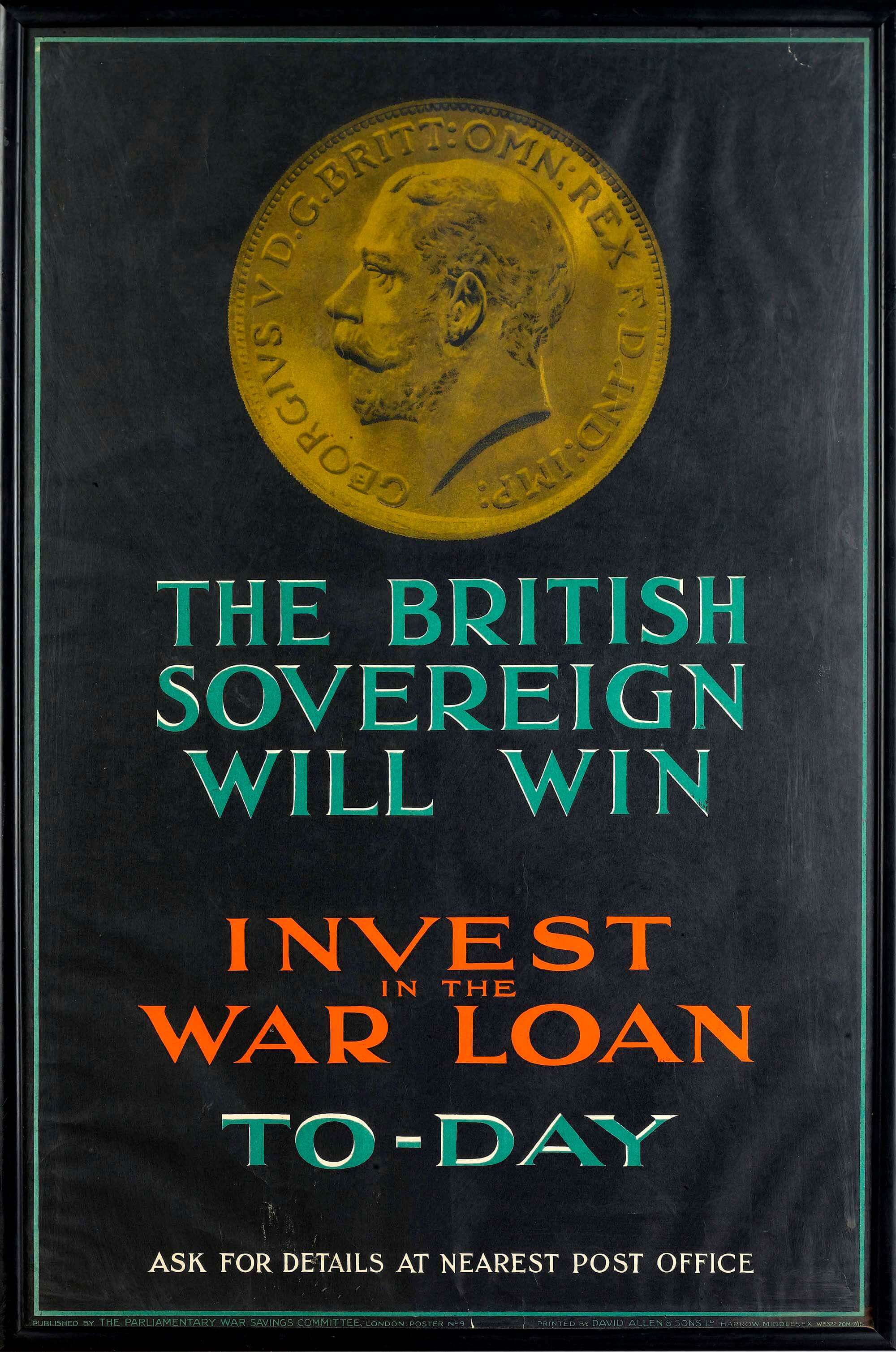
First World War poster
Dwindling Production
The designs on the George V sovereigns remained largely unchanged from those struck during his father’s reign, continuing to feature St George’s eternal struggle against the dragon, and it was to the Australian artist Bertram Mackennal, who the Royal Mint turned to prepare a portrait of the king for the obverse. Production of sovereigns continued in London until 1917 but then ceased until 1925. In that same year, the Bank of England returned a number of underweight sovereigns to the Royal Mint for recoinage that later were sent back to the Bank’s vaults.
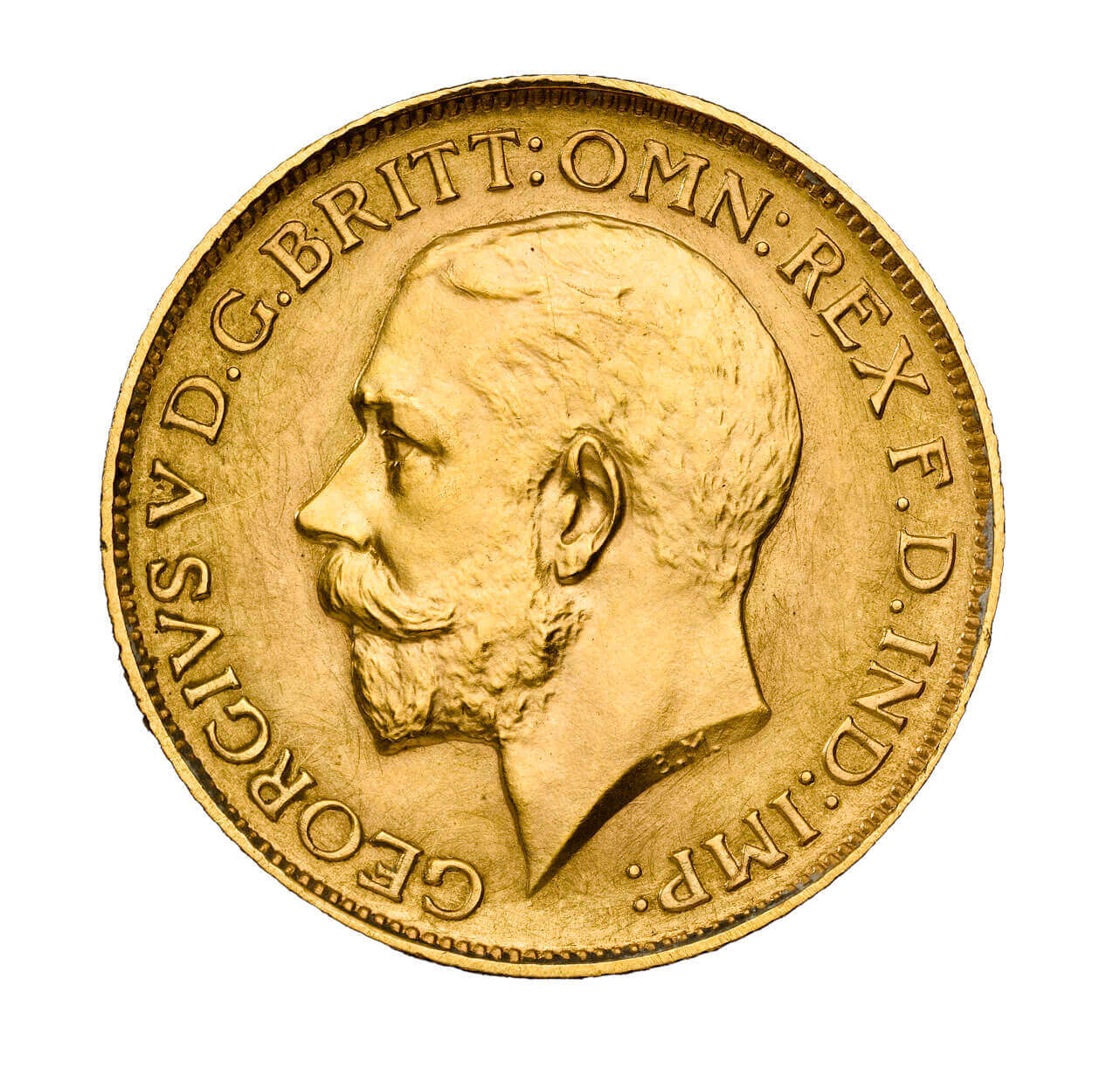
George V sovereign obverse (RMM1840)
Did You Know?
• As it became clear that it would not be possible to return to a circulating gold coinage, 90 million sovereigns were melted down in 1930 and 1931 to produce gold bars.
• With many believed to have been used to purchase goods and munitions from the United States, where they were subsequently melted down, 1917 sovereigns struck in London are hard to find.
• The twentieth-century novelist and poet Richard Church recollects receiving three sovereigns as his very first civil service pay packet just before the outbreak of the First World War. On purchasing a fish for his dinner, he accidentally lost one of the coins down a drain.
Scaling Back
Sovereign production continued at the branch mints during and after the First World War. By 1926, the equipment in Sydney was too old to compete with that of the newer branches in Melbourne and Perth, which led to the closure of the Sydney branch mint. In 1919, the minting of sovereigns ceased in Ottawa, although the Canadian government retained the branch until the option to strike sovereigns ceased to be a possibility. In 1931, it became the Royal Canadian Mint.
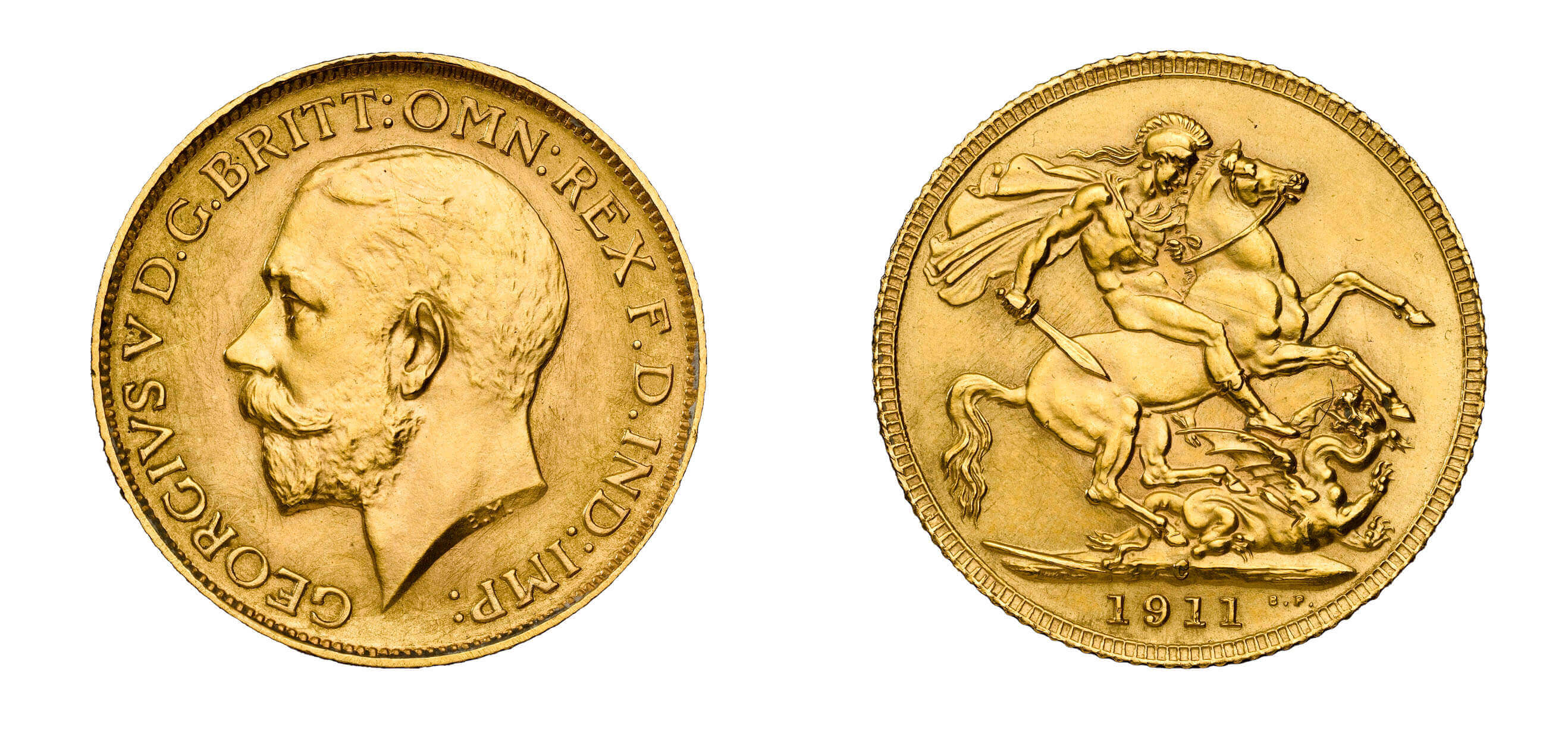
George V sovereign (RMM1840) featuring Ottawa 'C' mintmark on reverse
New Branches
Although some of the older branch mints were winding down production, two new branches opened during George V’s reign and the first was in Bombay, now Mumbai, India. It was a short-lived, wartime expedience – the branch struck sovereigns in 1918 but by the following year, no blanks were forthcoming and the branch closed.
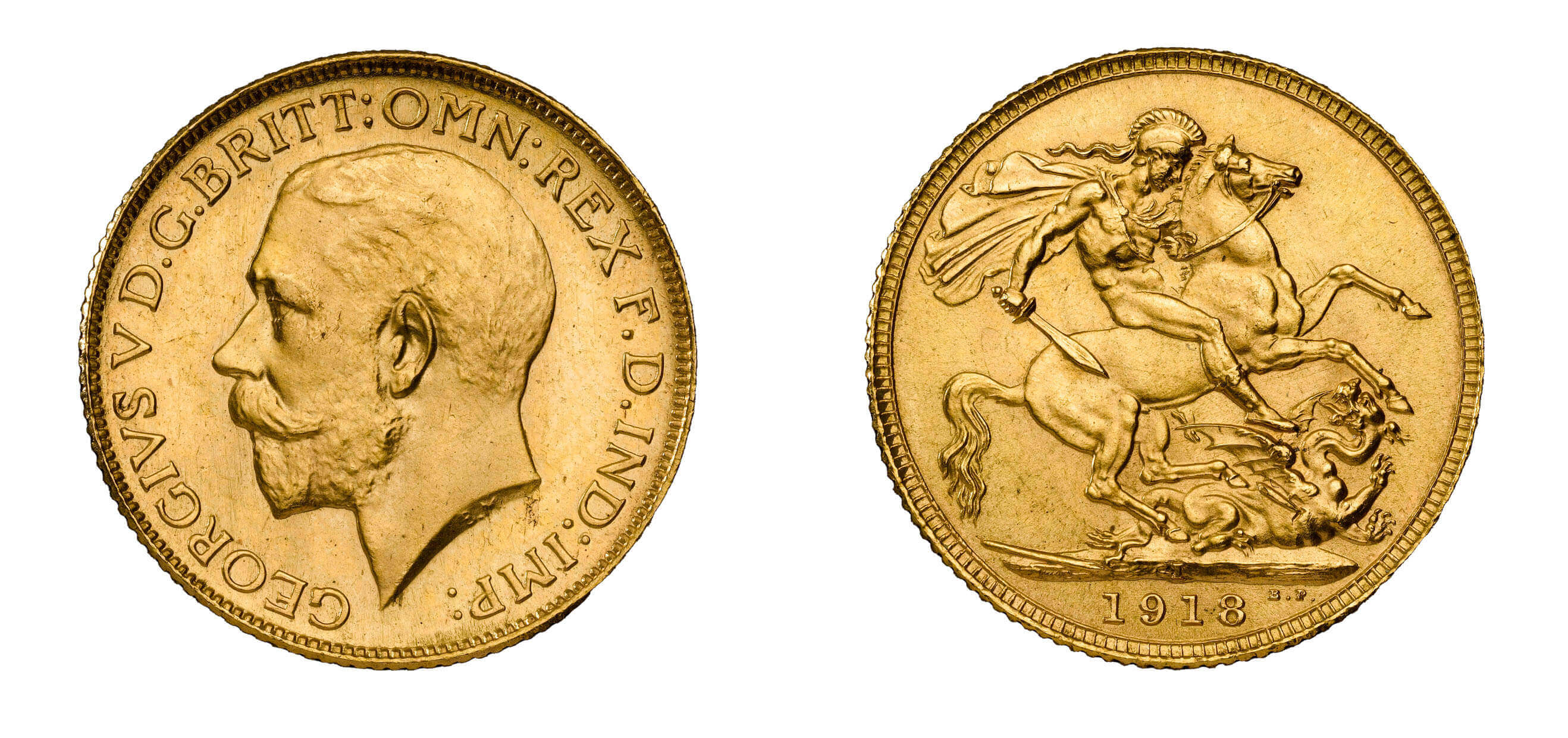
George V sovereign (RMM1847) featuring Bombay 'I' mintmark on reverse
Whilst the Bombay branch was atypical, the mint in Pretoria, South Africa, followed the pattern of turning locally mined gold into sovereigns. The branch produced sovereigns from 1923 and continued throughout George V’s reign.
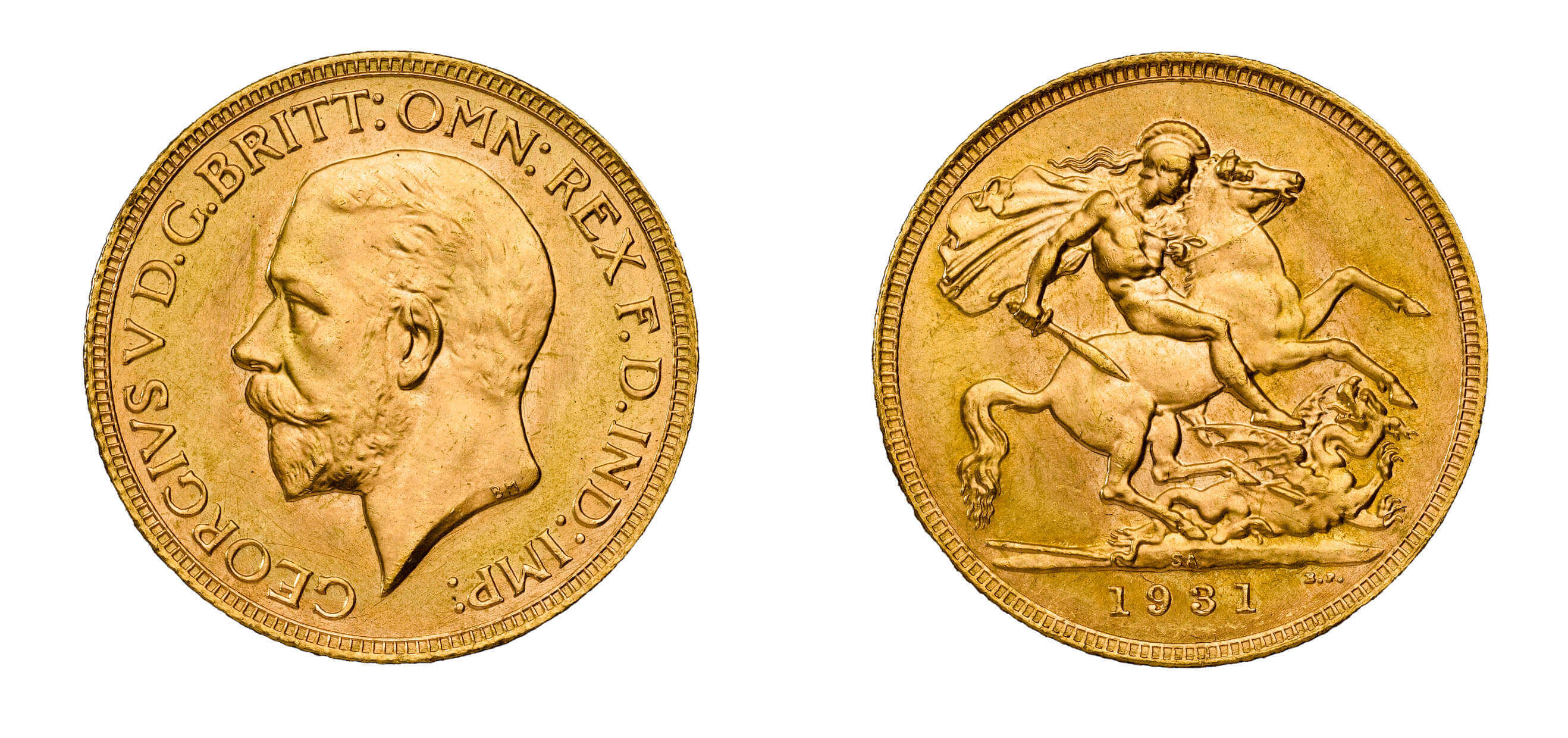
George V sovereign (RMM1857) featuring Pretoria 'SA' mintmark on reverse
Did You Know?
• The Bombay branch struck more sovereigns in its single year of operation than the Ottawa branch managed in more than 20 years.
• There was a belief that sovereigns struck in India were used to pay T.E. Lawrence’s troops in the Middle East. Although this may not be true, it is a testament to the enduring popularity of the coin in the region and Lawrence certainly used sovereigns during his campaigns.


